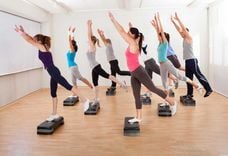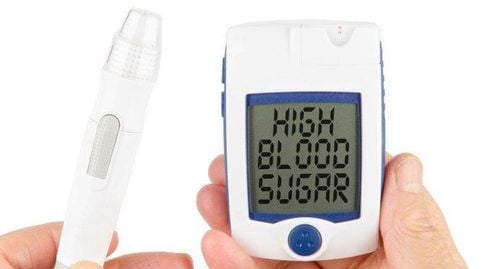This is an automatically translated article.
Proper breathing when jogging is one of the most important steps for people who regularly exercise. Not only does it help you breathe easier while running, but it also aids in enhancing athletic performance.
1. Why do you feel short of breath when running?
Strenuous activities like jogging can make your muscles and respiratory system work harder than usual. When you run, your body needs more oxygen, and at the same time, it is responsible for removing the accumulation of carbon dioxide, which is the reason why you feel short of breath.
Breath quality can be an indicator of your fitness level or your body's response to your running speed and intensity. If you run too hard or push yourself too hard, you may experience shortness of breath, chest tightness, and wheezing.
To maximize training performance, you should focus on regulating your breathing and implementing breathing techniques when jogging appropriately. This will not only help you increase athletic performance, but also feel easier when running.
Initially, you should gradually become familiar with breathing techniques when running and slowly adjust and optimize your breathing to make running sessions more effective.
2. How should you breathe while jogging?
If you only jog at a slow pace, you can use nose breathing. In addition, you can also choose to inhale through your nose and exhale through your mouth while jogging.
For high-intensity jogging or sprinting, you should breathe through your mouth because it is more effective. Inhaling and exhaling through the mouth will help more oxygen enter the body and provide the necessary energy for the muscles. In addition, mouth breathing also helps relieve tension in the jaw and relaxes your face and body.

Kỹ thuật thở khi chạy bộ sẽ phụ thuộc vào tốc độ chạy
3. Breathing techniques when jogging
Breathing techniques when jogging or running play an extremely important role in your running process. Applying these simple and effective strategies will help you breathe easier while running.
Here are some breathing techniques that you can apply when jogging or running:
3.1.Breathing with the diaphragm
Diaphragm breathing, also known as belly breathing, is a technique that helps you maximize oxygen intake while running. When you take a deep belly breath, it interacts with the diaphragm to create more space in the chest cavity, allowing the lungs to fully expand to take in more oxygen.
The application of this breathing technique when running will help increase the flow of oxygen-rich blood to the body's muscles and reduce running fatigue. In addition, many studies also show that diaphragmatic breathing has a calming effect, improving your focus and mental state.
Diaphragm breathing is especially important for shallow breathers. Breathing into your chest can cause your shoulders to stretch, so you may find your body relaxes more naturally when breathing through your belly. Not only running, you can completely apply the diaphragmatic breathing technique to your daily life.
How to do diaphragmatic breathing:
Feel the breath on your belly while lying on your back, place one hand on your stomach and the other on your chest. Inhaling through the nose helps to fill the abdomen with air. When the stomach has expanded, push the diaphragm down and outward. Lengthen the exhalation (try to last longer than the inhalation). You need to do several sessions of diaphragmatic breathing over the course of a few days, each lasting 5 minutes. The first time you incorporate this breathing technique into your run, you should run at a slow pace to regulate your breathing. Once you get used to diaphragmatic breathing, you can run at a normal pace or faster.
3.2. Special breathing exercises
You should make time a priority to focus only on your breath. This will help increase lung function and capacity, and develop breath awareness.
You need to determine which breathing exercises are most suitable for you. Create your own breathing habits by using one or more of the following breathing techniques when running:
Alternating nasal breathing (nadi shodhana) Equal breathing rib-stretch breathing Pursed-lips breathing Numbered breathing technique (take a deep breath until you can't take it anymore and then exhale forcefully, with your eyes closed to feel the breath).

Thở luân phiên bằng mũi (nadi shodhana) là một kỹ thuật thở khi chạy bền
3.3. Focus on your posture while jogging
In general, in order to optimize your breathing and help you feel more breathless when running, you need to create the right posture for your body to support more effective and healthy breathing.
To perform the correct breathing technique when jogging, you need to maintain a good posture and keep your head in line with your spine, making sure your head is not bent or forward. Besides, when running, you should relax your shoulders, avoid stooping or bending forward.
3.4. Breathe rhythmically
The rhythmic breathing helps you absorb more oxygen, and at the same time reduces the strain on the body every time your feet hit the ground while jogging.
To prevent the risk of muscle imbalance, you should alternate the exhale between the left and right leg. When breathing rhythmically will help create less pressure on the diaphragm and can balance the pressure exerted between the two sides of the body.
You can apply the 3 : 2 breathing technique, including inhaling for 3 beats of legs and exhaling for 2 beats. In case you are running at a faster pace, you can use the same 2:1 breathing technique. If you feel this breathing technique when running is too complicated, you just need to pay attention to your breath to feel the breathing comfortably.
3.5. Breathe in fresh air while jogging
Breathing fresh air will help you feel more comfortable when running. If you plan to run outdoors in an area with high levels of air pollution, you should choose the time of day with the lowest traffic density, avoiding crowded and congested places.
4. How should people with asthma breathe while jogging?
Patients with asthma should remain physically active even if this reduces or increases their symptoms. By accessing and practicing the right breathing techniques while running, you can improve lung function and effectively control asthma symptoms.
Here are some tips to help asthma patients feel better when jogging or exercising in general.

Kỹ thuật thở khi chạy bộ dành cho người hen suyễn
4.1. When the weather changes
Certain weather patterns can trigger asthma symptoms. On these days, you should choose to run indoors. Cold air usually contains less moisture, making it difficult to breathe while jogging and experiencing uncomfortable asthma symptoms. If you run in colder weather, cover your mouth and nose with a towel to warm the air as you inhale.
4.2. Warm up slowly before jogging
Warming up is especially important for people with asthma, this is because their bodies take longer to warm up their lungs. After the warm-up, you will gradually increase the intensity to get the lungs working. At the end of the run, perform a relaxation technique to let your lungs cool down gradually.
4.3. Breathing techniques when jogging for people with asthma
How do asthma patients breathe properly when jogging? People with asthma can use some of the following breathing techniques while jogging to help control their symptoms and improve their breathing, including:
Papworth Method Nose Breathing Breathing techniques Buteyko The method of deep breathing in yoga
Please dial HOTLINE for more information or register for an appointment HERE. Download MyVinmec app to make appointments faster and to manage your bookings easily.
References: flipbelt.com, healthline.com













